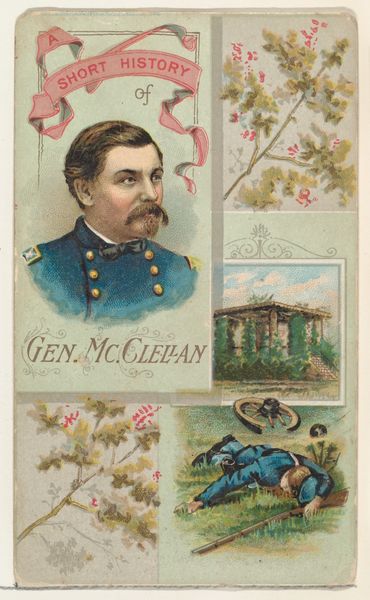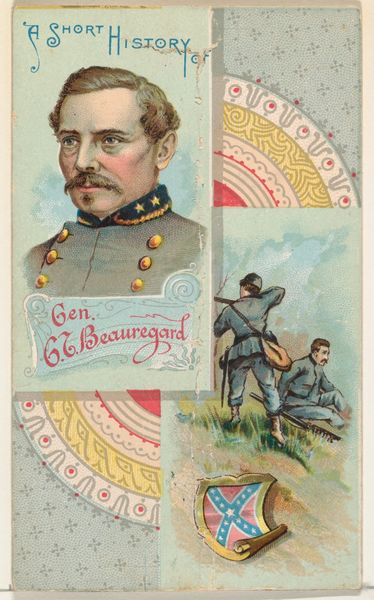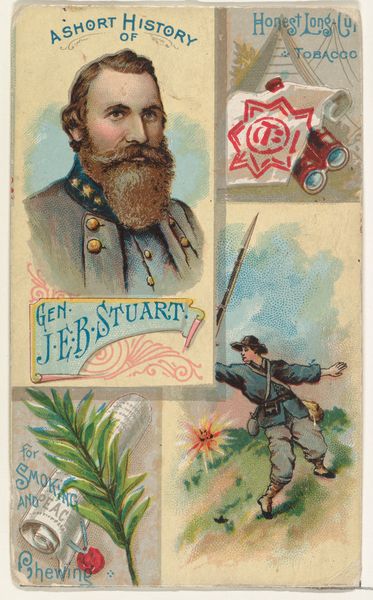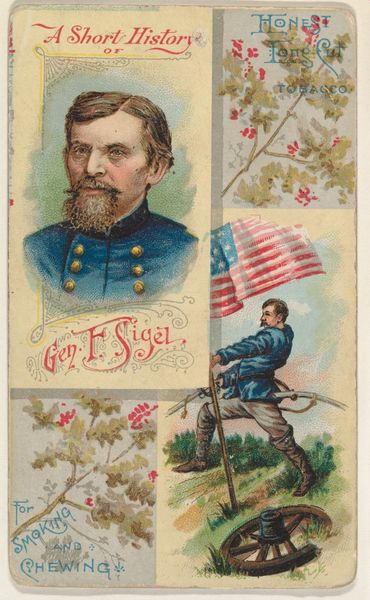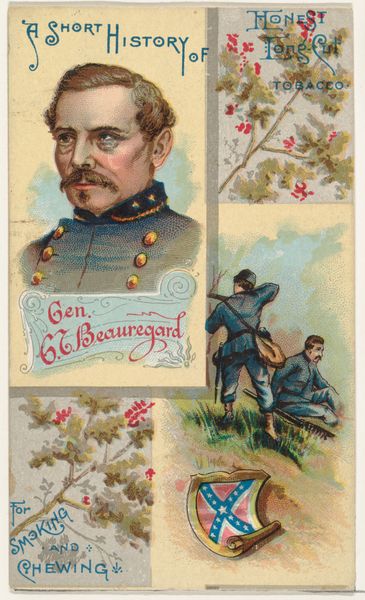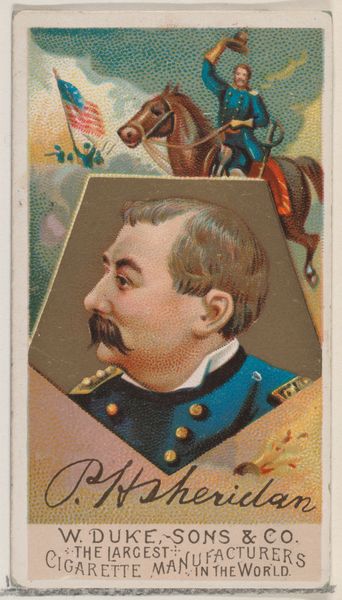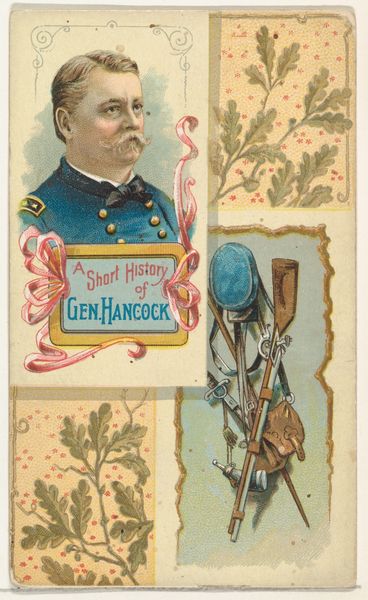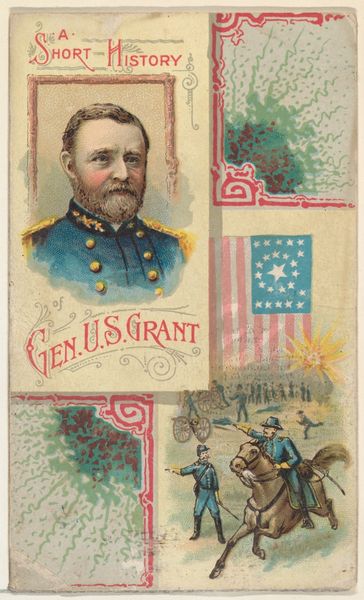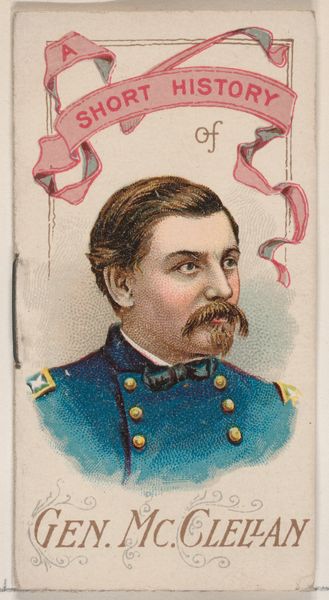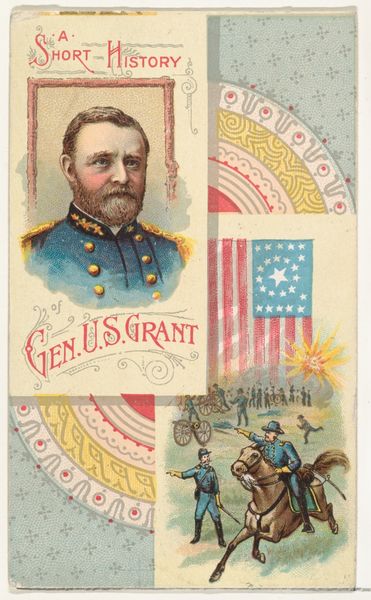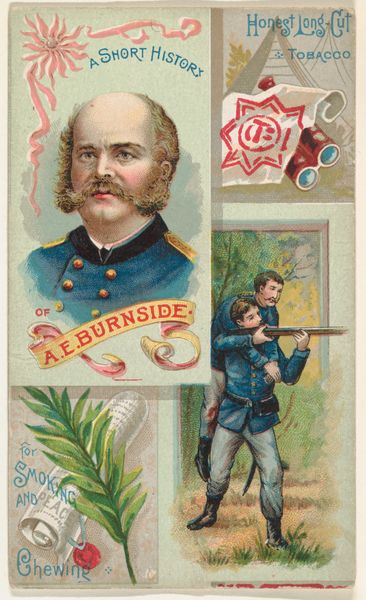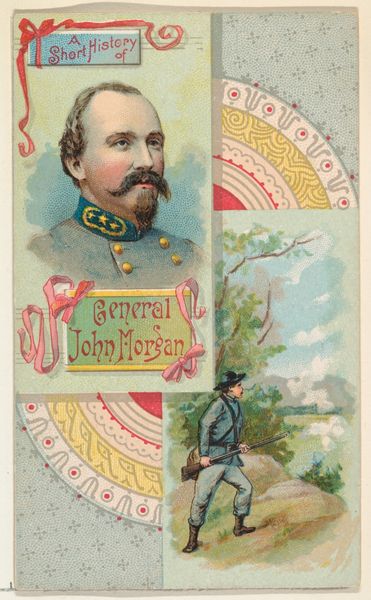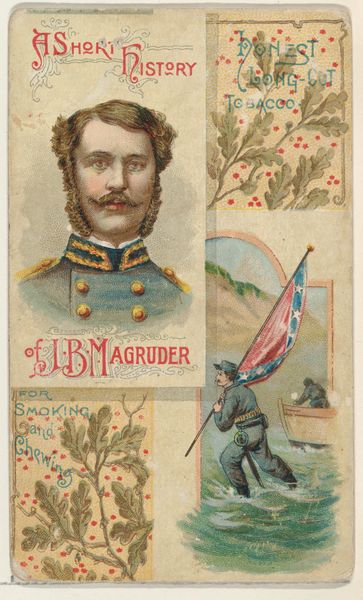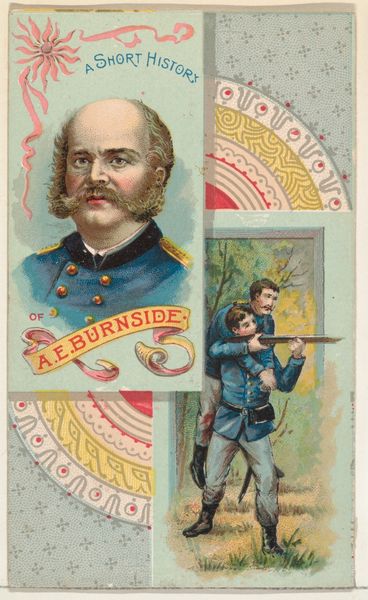
A Short History: General George B. McClellan, from the Histories of Generals series (N114) issued by W. Duke, Sons & Co. to promote Honest Long Cut Smoking and Chewing Tobacco 1888
0:00
0:00
drawing, lithograph, print
#
portrait
#
drawing
#
lithograph
# print
#
coloured pencil
#
men
#
genre-painting
#
history-painting
Dimensions: Sheet: 4 3/16 × 2 1/2 in. (10.7 × 6.4 cm)
Copyright: Public Domain
Editor: Here we have "A Short History: General George B. McClellan," a lithograph print from 1888 by W. Duke, Sons & Co. It's intriguing how a tobacco company used Civil War figures in their advertising. What stands out to you about this image? Curator: It's a fascinating piece of cultural ephemera, isn't it? Tobacco cards like these were hugely popular, acting almost like trading cards. Notice how McClellan is presented: a heroic portrait, juxtaposed with vignettes. What strikes me is how this card uses historical imagery to promote a product. How does the glorification of a General influence consumption, do you think? Editor: That’s a great question. Maybe it was a way to appeal to a sense of patriotism, associating "Honest Long Cut" with figures seen as national heroes, or at least figures from recent historical events, though McClellan’s legacy is quite complicated. Curator: Exactly. The imagery sells a carefully constructed idea of history and masculinity. We must also consider who these cards were marketed towards: predominantly men. The images reinforce particular gender roles alongside this carefully curated version of history. Who benefits from this type of imagery? Editor: That's a good point, because this type of advertising probably reinforced existing social and political power structures. Also, I hadn’t thought about the economic impact of popular history. It all seems connected, like the war, tobacco production, and idealizing military figures for profit. Curator: Precisely! And these seemingly innocuous objects contribute significantly to shaping historical narratives. The packaging becomes a vehicle for promoting a specific ideology and social order. It forces us to question how historical figures and events are mobilized in the service of commerce and cultural narratives. Editor: I never considered how much a simple tobacco card could reveal about history and marketing strategies! It gives you a new perspective on consumer culture in the late 19th century.
Comments
No comments
Be the first to comment and join the conversation on the ultimate creative platform.
